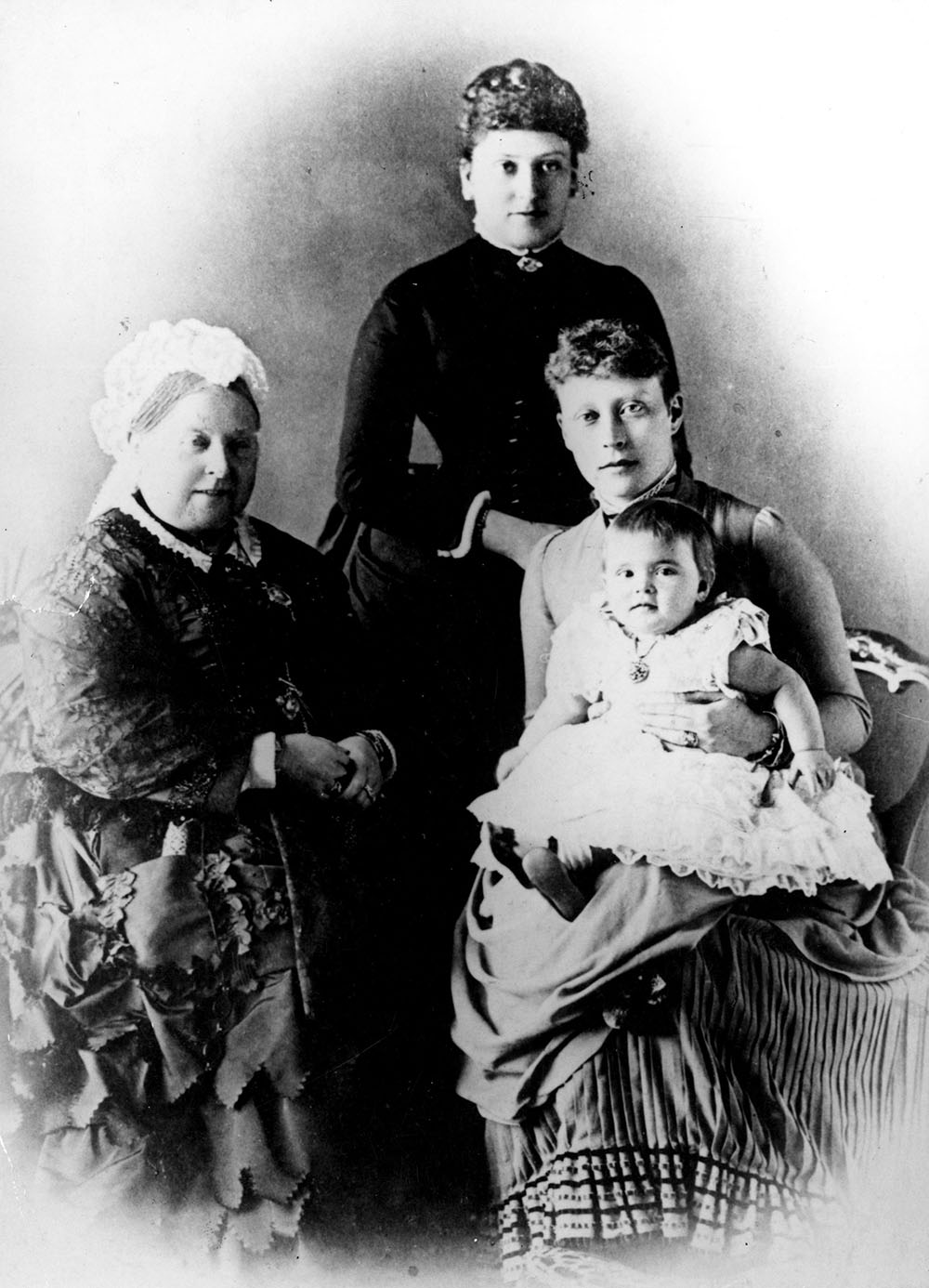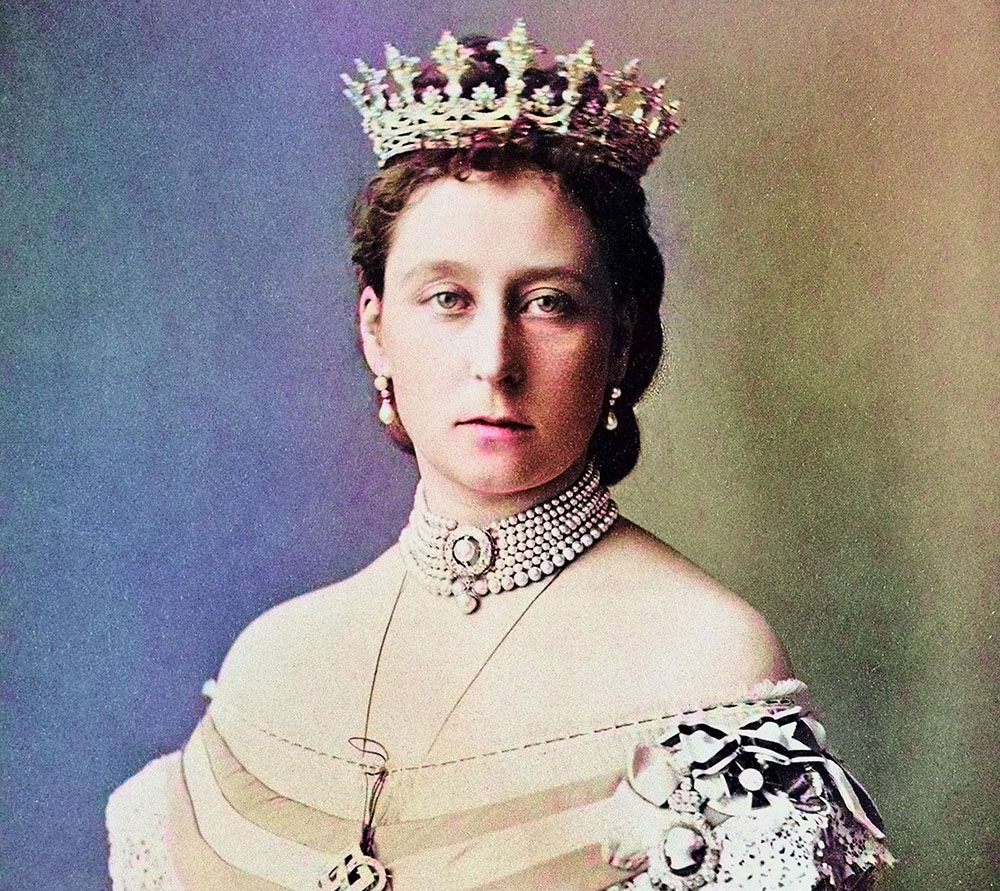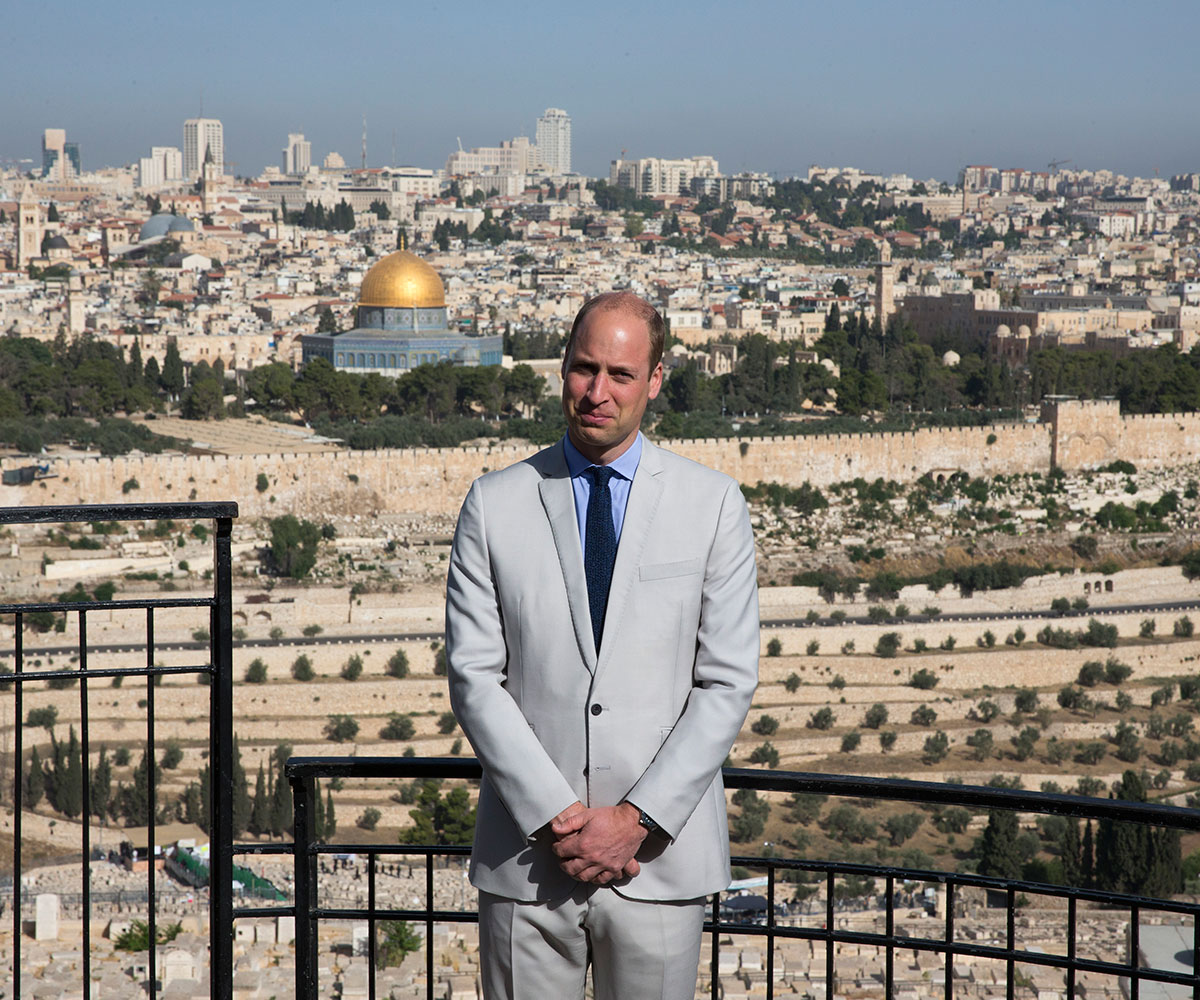It happens every time a member of the royal family announces they’re pregnant. There’s a frenzy with people trying to guess what the baby will be called, and when it comes to girls names, there’s one that always seems to emerge as a favourite: Alice.
Yet it hasn’t been bestowed as a first name on a royal baby girl for nearly 140 years – and the reason for that may be because the very first princess given the name was considered to be cursed.

Grand Duke Louis and Grand Duchess Alice, circa 1873, with their children Victoria (standing in front of her father), Alix (in her father’s arms), Friedrich (held by his mother), Elisabeth (on her mother’s right), and Irene and Ernst (front).
Princess Alice Maud Mary, the third child of Queen Victoria and Prince Albert, was born into great privilege but her life was beset by tragedy. And sadly, many of her descendants also endured terrible trauma, with three of them being assassinated.
Alice was a surprise choice of name for Victoria’s second daughter, who was born on April 25, 1843. The name had been around since the 12th century but had never been given to a royal before. Alice was close to her older siblings, firstborn Princess Victoria, and Prince Bertie, who went on to become King Edward VII, and often helped to look after her six younger siblings (Victoria and Albert had nine children in all).
Kind and compassionate by nature, Alice developed an interest in nursing from an early age. At 11, she visited London hospitals to meet soldiers injured in the Crimean War, and became a devotee of nursing pioneer Florence Nightingale. When her father Albert fell ill with fatal typhoid fever in 1861, it was Alice who nursed him in the last weeks of his life.

Queen Victoria (left) with youngest daughter Beatrice (standing), and her granddaughter Victoria, holding her daughter Princess Alice of Battenberg.
Six months after her father died, Alice married minor German royal Prince Louis of Hesse, later the Grand Duke of Hesse. They moved to Darmstadt, near Frankfurt, where Alice found it hard to adjust to her new, somewhat impoverished life. The couple had seven children, five girls and two boys, and in between raising them, Alice worked, often incognito, to try to improve the lives of the poor and the sick. She visited soldiers wounded in the Austro-Prussian war and set up the Princess Alice Women’s Guild, which ran military hospitals and trained nurses.
Unfortunately, a major health issue affected several of Queen Victoria’s offspring: haemophilia. It hinders the body’s ability to control bleeding and while it only affects men, it is carried by women. Doctors realised Victoria was a carrier after her eighth child, Prince Leopold, was diagnosed with it as a child. He was the only one of her children to actually have haemophilia, but two of her daughters – Alice and Princess Beatrice – were carriers. The disease was to have far-reaching implications on several generations in years to come.

With her brother Bertie, who became King Edward VII.
Like her mother, Alice had a son with haemophilia – Prince Friedrich – and two daughters who were carriers. Tragedy struck when, shortly before turning three, Friedrich, known as Frittie, fell from
a third-storey window of his home. He probably would have survived the fall, but the haemophilia caused severe internal bleeding and he died.
Then, five years later, five of Alice’s remaining six children contracted diphtheria and the youngest, Princess Marie, died aged four. Alice nursed the family around the clock, taking care not to get diphtheria herself by following her friend Florence Nightingale’s advice on reducing the spread of infection. But after telling her son Ernst about the death of his sister, and consoling him with a kiss, she caught the illness from him. Alice died on December 14, 1878 – the 17th anniversary of her father’s death. She was only 35.
She was the first of Queen Victoria’s children to die and her mother outlived her by 22 years. But that wasn’t the end of the trauma. There was heartbreak ahead for many of her direct descendants and their families, some who have gone on to have defining roles in history.

Four daughters of Prince Andrew and Princess Alice of Greece. From left: Princesses Cecilie, Margarita, Sophie and Theodora.
Alice’s eldest daughter, Victoria, married naval officer Prince Louis of Battenberg (although they later changed their name to Mountbatten during World War I thanks to anti-German sentiment). Victoria named her eldest daughter after her mother, and like her namesake, Princess Alice of Battenberg faced many challenges. She was born profoundly deaf, was deserted by her playboy husband Prince Andrew of Greece and Denmark, and committed to a psychiatric institution after a diagnosis of paranoid schizophrenia.
One of her daughters, Princess Cecilie, died in a plane crash in 1937, along with her husband and two children. According to one theory, the accident happened because Cecilie, who was eight months pregnant, had gone into labour and the pilot was trying to make an emergency landing. The newborn baby’s body was found in the wreckage.
Alice of Battenberg became deeply religious, founded an order of nuns and for many years lived in near-squalor in Greece, helping the poor and sheltering Jewish families during the war. But the last years of her life were lived in comfort after she was taken in by her son, Prince Philip, and his wife, Queen Elizabeth II. She died at Buckingham Palace in 1969, aged 84.

Tsarina Alexandra Feodorovna and her son Alexei, heir to the Russian throne.
Despite being the mother-in-law of the Queen, Alice of Battenberg wasn’t the best-known member of her family – that was her younger brother Prince Louis. Later known as Earl Mountbatten, he was the viceroy of India and at one stage the head of the British Armed Forces.In August 1979, Earl Mountbatten was assassinated by an IRA bomb detonated on board his fishing boat in Ireland.
Even greater tragedy befell two of the first Princess Alice’s other daughters, who married into the Russian royal family. Her second daughter, Princess Elisabeth, married Grand Duke Sergei Alexandrovich, brother of the Russian Tsar Alexander III. In 1905, Sergei was killed by a bomb thrown at him by a socialist revolutionary. After his murder, Elisabeth became a nun and opened a convent, hospital and orphanage, helping the poor of Moscow. Despite turning her back on royal life, she was arrested on the orders of Vladimir Lenin in 1918 and along with other members of the Russian nobility, thrown into a mine shaft into which grenades were then hurled. It was later found that before she died of her injuries, Elisabeth had tended to the wounds of others in the shaft with her, bandaging the head of one with her nun’s wimple.

Princess Alice of Albany, Queen Victoria’s last surviving grandchild
Meanwhile, her younger sister Princess Alix married Sergei’s nephew Tsar Nicholas II thanks to Elisabeth’s match-making. The sixth child of Princess Alice, Alix was given the German version of her mother’s name but after she married Nicholas, she became known as Tsarina Alexandra Feodorovna.
The Russian people did not warm to their shy German/English empress and considered her to be cursed when her first four babies were girls. Her delight at finally having a son, Alexei, was tempered with sadness as he had haemophilia.
Alix felt guilty for passing on the disease and devoted her life to trying to keep Alexei as well as possible. That led to seeking help from Siberian monk Grigori Rasputin, who she believed could relieve Alexei’s suffering. Her dependence on Rasputin gave him huge power in the royal court – Alexandra took his advice on matters of state when her husband went off to the frontlines during World War I and she was left in charge – and eventually the monk was assassinated by concerned nobles.

Prince Philip with his mother, Princess Alice of Greece.
But the damage had been done. The monarchy was seen as imperious and out of touch with the people, and Russia’s poor performance in the war was blamed on a conspiracy launched by their German-born empress. A devastating recession and food shortages led to riots, and eventually the 1917 Russian revolution. The royal family was deposed and imprisoned by the Bolsheviks, then executed on July 17, 1918.
Princess Alice’s surviving daughter, Princess Irene, also dealt with the devastating loss of a child. She passed on haemophilia to two of her three sons. The youngest, Prince Heinrich, fell off a chair when she left him unsupervised for a few minutes, and banged his head, causing a brain bleed. The four-year-old died a few hours later.
Alice’s final surviving child was her son, Prince Ernst. He married twice and had four children, but again the so-called curse struck his family. One son was stillborn and his beloved daughter Elisabeth died of typhoid aged eight. His third child, Georg, married Ernst’s older sister Victoria’s granddaughter, the aforementioned Princess Cecilie. Georg was with her and their two young sons when their plane crashed in 1937. Their youngest child, toddler Johanna, was not on the flight and was adopted by relatives but died from meningitis aged three.

Elizabeth II with Earl Mountbatten in 1965. He was assassinated in 1979.
The name Alice seemed to go out of favour with Victoria’s descendants, other than her son Leopold, whose only daughter was Princess Alice of Albany. The curse seemed to dog her too – she grew up without her dad, who died after falling in his home and banging his head when she was just a year old. One of her sons died at five months and the other, Prince Rupert, who was haemophiliac, died from a brain bleed following a car crash when he was 20.
According to one popular theory, the curse was linked to a tiara the first Princess Alice wore for her wedding. Known as the Strawberry Leaf Tiara because of its design, it was commissioned for her by her father Prince Albert, and after her death was handed down to several family members, including the ill-fated Cecilie. It was found, unscathed, in the wreckage of the plane crash that killed her. Today it is in storage in Germany.
It’s telling that of the late Queen’s direct descendants, none has been given the name Alice. Two have it as their middle names – Princess Anne, 71, and Lady Louise Windsor, the eldest child of Prince Edward and Sophie, Countess of Wessex. Anne’s life has been mostly trauma-free and while Louise, 18, had a dramatic arrival into this world – she nearly died at birth after her mother suffered a placental abruption – so far they seemed to have escaped any curse.


